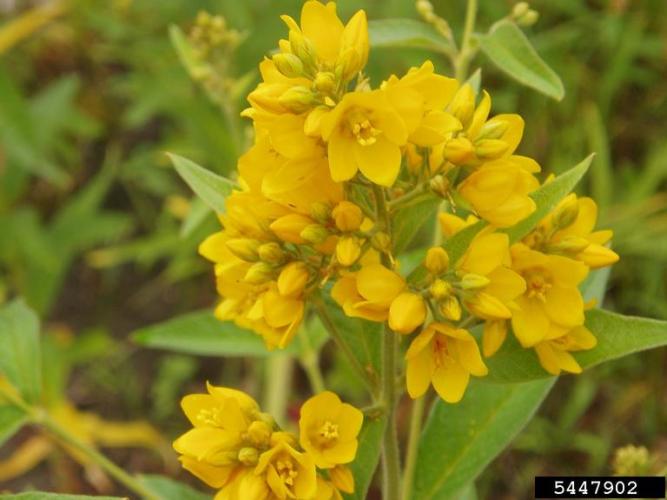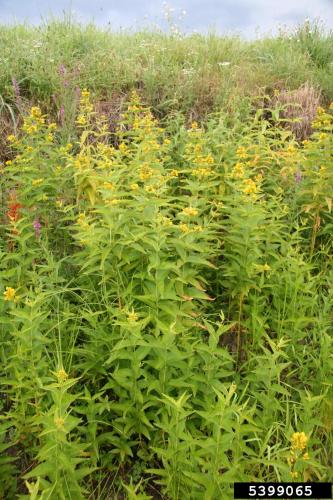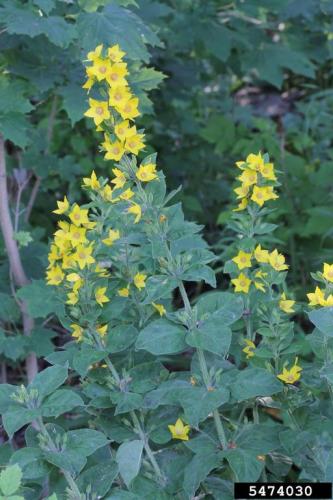Loosestrife, Garden
Identification
Appearance
Lysimachia vulgaris is a herbaceous perennial with erect stems up to 3.3 feet in height and long, stolon-like rhizomes that can run 33 feet long.
Foliage
The leaves of this plant are opposite or whorled. They have small glands that are black or orange in color and soft hairs beneath. They are lanceolate to laceolate-ovate in shape, 2.75-4.75 inches in length and 0.6-1.5 inches in width. The middle and upper leaves have short petioles and are acuminate.
Flowers
The inflorescence is a terminal, leafy panicle that appears June-September. The flowers have five yellow petals and are 0.5-0.75 inches across. The lobes of the calyx are red-margined and 0.15-0.2 inches long.
Fruit
The fruits are dry capsules. The seeds of this plant are most likely water-dispersed. However, the main method of dispersal for this plant is via rhizomes.
Biology
This is considered a watch list species
Origin
Native to Eurasia
Habitat
Edge, Herbaceous Wetland, Lake or Pond, Open Disturbed Area, River or Stream, Roadside, Salt Marsh, Wet Meadow, Yard or Garden. Lysimachia vulgaris prefers moist soil, and will invade fens, wet woods, lake shores, rocky river shores and riparian zones.
Life cycle
Blooms July through August
Ecological Threat
Lysimachia vulgaris presents a similar threat as the serious invasive Lythrum salicaria (purple loosestrife). In Washington state it has been reported as possibly outcompeting Lythrum salicaria in wetland habitats. The rhizomes spread readily. Though its populations have not yet reached the numbers of Lythrum salicaria populations, it has the potential to do so. Lysimachia vulgaris prefers moist soil, and will invade fens, wet woods, lake shores, rocky river shores and riparian zones.
Vermont Distribution
Citations
Photo Credit
5399065, Robert Vidéki, Doronicum Kft., Bugwood.org
5447902, Leslie J. Mehrhoff, University of Connecticut, Bugwood.org
5474030, Rob Routledge, Sault College, Bugwood.org
Information Credit
Invasive Plant Atlas of New England, second link
Department of Ecology State of Washington


